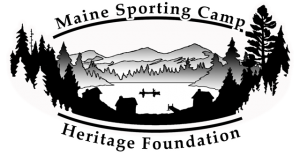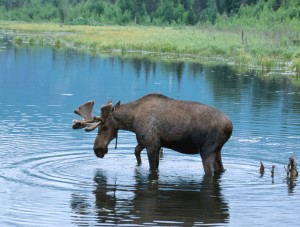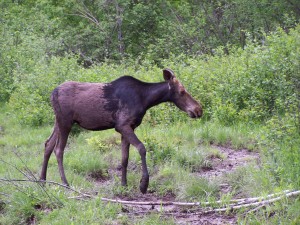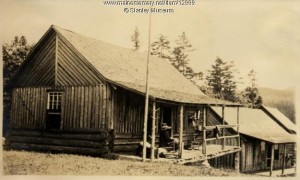Sporting camps depend on having a healthy natural environment. Each has its own unique resources and bio-diversity. The Foundation seeks to assist sporting camps in identifying their unique habitats and wildlife that visitors want to see and enjoy. The natural resources will be recorded as the Foundation’s database is developed.
Maine has habitat for many rare and endangered species of plants, animals, birds and fish. The list is too long to add here. Fortunately, the expertise to identify these species and their habitats is readily available through many of our partners, such as Maine’s department of Inland Fish and Wildlife and the Maine Natural Areas Program. In cooperation with partners such as these, the Foundation will help sporting camps to enhance these habitats and wildlife populations.
We can anticipate several major species issues, such as these:
- Whitetail Deer – Once common and very much a part of Maine’s culture, deer populations have declined by nearly 90% in the northern regions of Maine where sporting camps are located. This is due to several factors, including habitat loss and predation. Most sporting camps have a Deer Wintering Area (DWA) nearby that most likely is not currently providing the quality of habitat it once did. The Foundation will develop a Deer Wintering Area Habitat Database, and will work with state agencies and forest landowners to creating appropriate management plans.
- Pine Martin – Martin are a member of the weasel family that has had declining populations due to changes in their preferred evergreen forest habitat. The Foundation works with state agencies and forest landowners to create appropriate management plans for areas where the martins are found.
- Canada Lynx – A threatened species in the United States, Maine is the southern edge of the lynx’s northwoods habitat and supports a small but viable population. Many sporting camps are within the vital habitat areas for these animals. The Foundation works with state agencies and forest landowners to create appropriate management plans for areas where the lynx are found.
- Loons & Bald Eagles – These birds are found in areas near sporting camps. Nesting sites for both are specially protected in Maine. These sites will be identified, and the Foundation will work with state agencies and forest landowners to creating appropriate management plans for assuring that nests are left undisturbed.
- Wild Brook Trout – Maine contains 97% of the remaining wild brook trout habitat east of the Mississippi River. Many sporting camps focus specifically on this species, as visitors come to Maine from very far away to fish for them. Unfortunately, development and invasive fish species is taking its toll. Occasionally an industrial activity damages the spawning waters for this cold water fish. The state of Maine has identified the major lakes where these fish thrive, and has launched an initiative to better protect the wild strains of this fish. These strains also include the rare blueback brook trout which thrives in only a few lakes, several of which are adjacent to a sporting camp. The Foundation works with state agencies and forest landowners in creating appropriate management plans for areas where wild brook trout are found.




